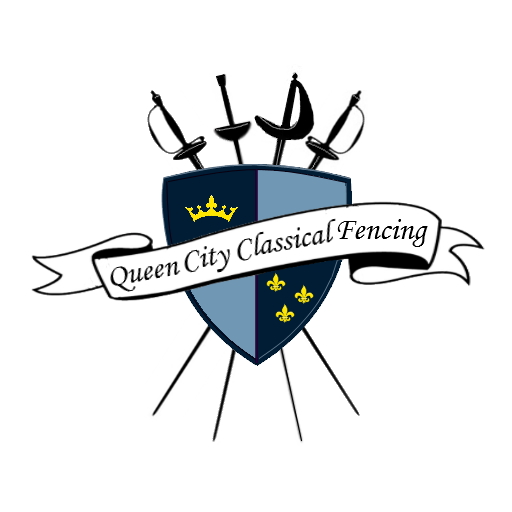 Sir William Hope (1660-1724) was trained in the French school of the smallsword but came to conclude it lacking. Sir William went on to devise an approach to the smallsword that incorporated the techniques established in the English backsword tradition (Linacre). This endeavor first bore the The Sword-Man’s Vade Mecum (1691), or more specifically, The Sword-Man’s Vade Mecum: A Preservative against the Surprize, of a Sudden Attaque with Sharps, &c. Being a Reduction of the most Essential, Necessary, and Practical part of Fencing; into a few Special Rules, With their Reasons: Which all Sword-Men should have in their Memories when they are to Engadge; but more especially if it be with Sharps. With some other Remarques and Observations, not unfit to be known. By 1707, Hope’s method had developed into what is colloquially know as his New Method.
Sir William Hope (1660-1724) was trained in the French school of the smallsword but came to conclude it lacking. Sir William went on to devise an approach to the smallsword that incorporated the techniques established in the English backsword tradition (Linacre). This endeavor first bore the The Sword-Man’s Vade Mecum (1691), or more specifically, The Sword-Man’s Vade Mecum: A Preservative against the Surprize, of a Sudden Attaque with Sharps, &c. Being a Reduction of the most Essential, Necessary, and Practical part of Fencing; into a few Special Rules, With their Reasons: Which all Sword-Men should have in their Memories when they are to Engadge; but more especially if it be with Sharps. With some other Remarques and Observations, not unfit to be known. By 1707, Hope’s method had developed into what is colloquially know as his New Method.
The Vade Mecum “contains a discussion of the fundamental techniques and tactics that someone trained in that system should employ if defending their life with the small-sword” (ibid). Sir William begins by firmly establishing fundamentals which are the foundation his eight rules are built upon. Despite the long expanse of time since he codified them, his fundamentals and eight rules are as applicable to the classical or historical fencer on the piste today as ever they were to the gentleman who had to defend his honor with sharps on the mean streets of 1690’s Edinburgh.

Before I begin, I shall give you a Fundamental, which in respect of his Excellency, and Universality, I may call the Golden Number, or Rule of Three, both because it is alwayes to be taken alongst with you, and to be made a part, (and that none to the least) of each Particular Rule I am to give you, and also because it consists of Three important Terms or Words which are.
Calmness, – Vigour, – and Judgement.
Now these three Words in general, being the only Foundation upon which all True Fencing is built, and each Word in particular being as it were a Column, or Pillar by which my Rules are to be supported, (for without them all would be but Uncertain and False) I shall begin my First Rule, which as well as all the rest, is to be supported by those three infallible, and never to be too exactly copied Pillars of the composite Order, because each of them in some measure partake of the Beauty and Excellency of the Other two, and to that end Earnestly and Seriously intreats and desires: That.
- Rule I. Whatever you do, let it alwayes (if possible) be done Calmely, and without Passion, and Precipitation, but still with all Vigour, and Briskness imaginable, your Judgement not failing to Direct, Order, and Govern you as to both.
- Rule II. With Calmness, Vigour, and Judgement, put your self into as Closs, Thinn and Convenient a Guard, as the Agility of your Body will permit your Heels being still kept as near other as possible.
- Rule III. With Calmness, Vigour, and Judgement, make use (for your Defence) of the of the most Excellent, and not to be parrallelled Contre-caveating Parade, and that generally upon the outside of your Sword, your left hand alwayes asisting you if any wayes doubtful of the Parrade; and that you may with the more certainty defend your self, look alwayes to your Adversary’s Sword-Hand.
- Rule IIII. With Calmness, Vigour, and Judgement, endeavour to Offend your Adversary, by binding or securing his Sword, and that for the most part also upon the outside, giving in a single plain Thrust upon the back of it, or if you please make a Feint upon the back of your Binding, your left Hand making alwayes a kind of Parrade, at the giving in of every Thrust, the better to save you from a Contre-temps; and by no means rest upon your Thrust, but instantly after the performing of it, whether you hitt or not, recover to your Defensive Posture again: This is the true Play for a Mans Life: but if you be so far Master of your Adversary, and so merciful to him that you design not his Life, but only to disable him: Then.
- Rule V. With Calmness, Vigour, and Judgement, Thrust at his Sword-hand; Wrest, or Arm, or at his nearest advanced Thigh, the wounding any of which once, or twice, will seldome fail to disable him.
- Rule VI. If your Adversary be Hasty, Passionate, and pursue Furiously, and Irregularly, then with Calmness, Vigour, and Judgement, Cross, Stop, and Oppose his Fury: but upon the contrary if Careless, Lash, Slow, or perhaps Timorous, then also Calmly, Vigorously, and with Judgement pursue him.
- Rule VII. With Calmness, Vigour, and Judgement, prevent yor Receiving one Thrust for the giving another, called (after that dangerous World, and Artists Bug bear) a Contre-temps, and for that end the using your left Hand for a Defence upon your Pursute, as I have before told you, will not be found amiss.
- Rule VIII. Now to put a Close to my Rules, let them all be done within distance as much as possible, and with little or no Elonge, or stretch of any part of the Body, save only that of the Wrest & Arm (called a Spring) and as I desired you to begin, so I expect you will continue and end all your Actions, with that most Excellent Fundamental, and Golden Rule of Three to wit.
Calmness, – Vigour, – and Judgement.
And then no doubt, you will procure by the foregoing Rules, advantage proportionable to the Art you have acquired to put them in practice.

If you would like to explore this topic further, consider Dr. Thurston’s publication on Sir William Hope and his methods, A Newer, Shorter and Easier Method of Fencing
(2013) which includes discussion on the Vade Mecum. It can be purchased from Amazon here: https://www.amazon.co.uk/Newer-Shorter-Easier-Method-Fencing/dp/0956487165/
Blogger’s Note
This post was derived from the extensive work by Dr. Milo Thurston and others at the Linacre School of Defense in Oxford. The plate and text transcription are published on the Linacre School of Defense site and used here in accord with the Creative Commons generic license (CC BY-NC-SA 2.0) with our appreciation.
Works Cited
Linacre School of Defense (2009). Selected Works by Sir William Hope. World Wide Web. Accessed October 15, 2016.
Hope, W. (1691). The Sword-Man’s Vade-Mecum, or a preservative against the surprize of a sudden attaque with Sharps. &C. Edinburgh: John Reid. (In Captain Hutton’s Collection)






Thanks for posting this, and the earlier post mentioning the LSD.
If you don’t mind the shameless plug, may I mention that this topic is also mentioned in this book?
LikeLiked by 1 person
Indeed! I have also updated the post to make it more apparent than simply appearing in the comments.
LikeLike
Excellent – many thanks for adding that.
LikeLike